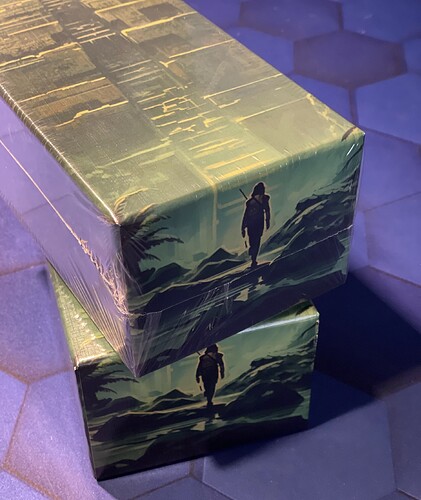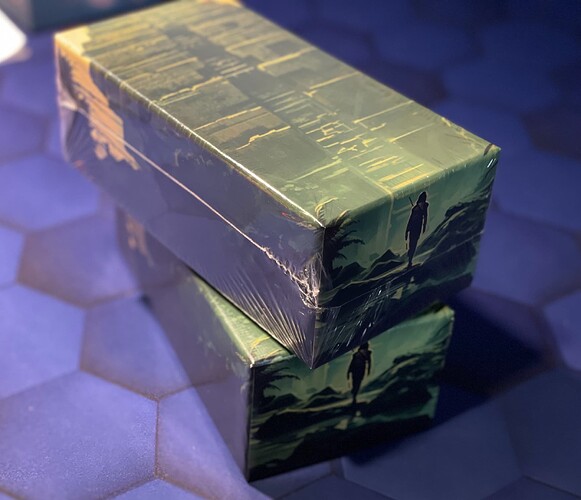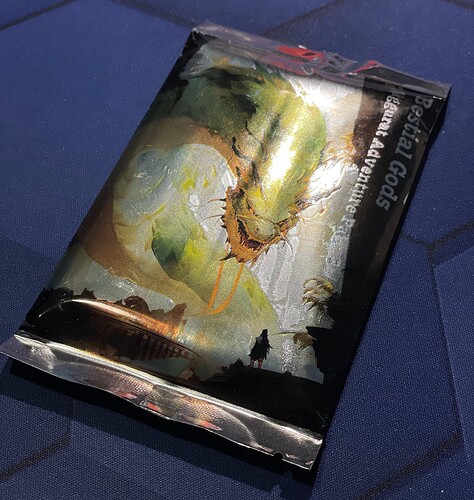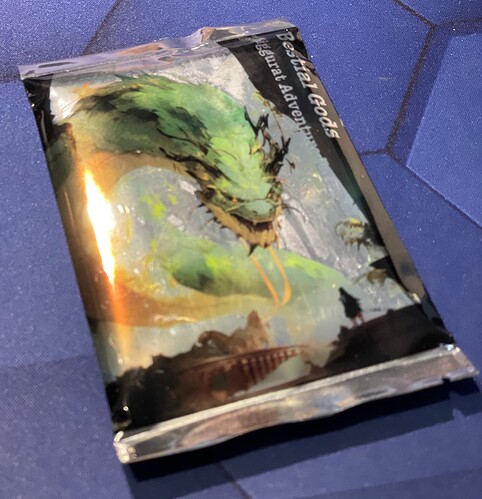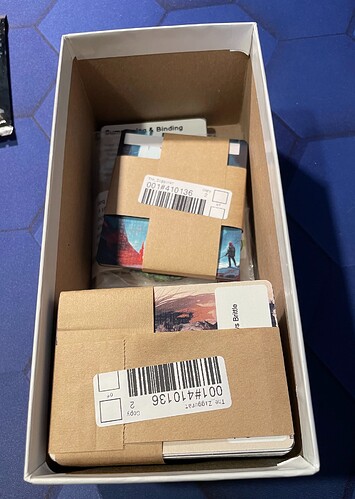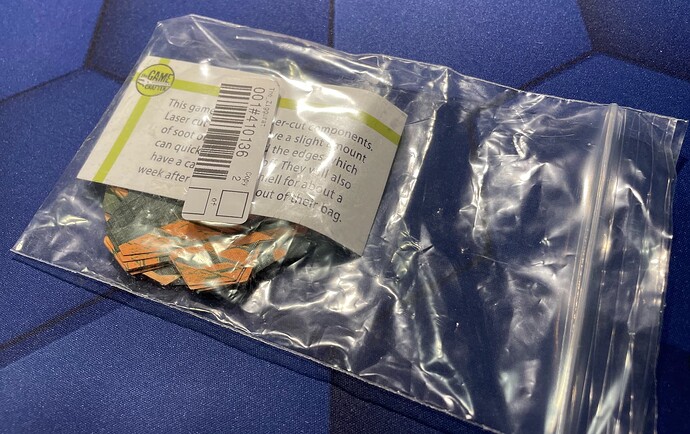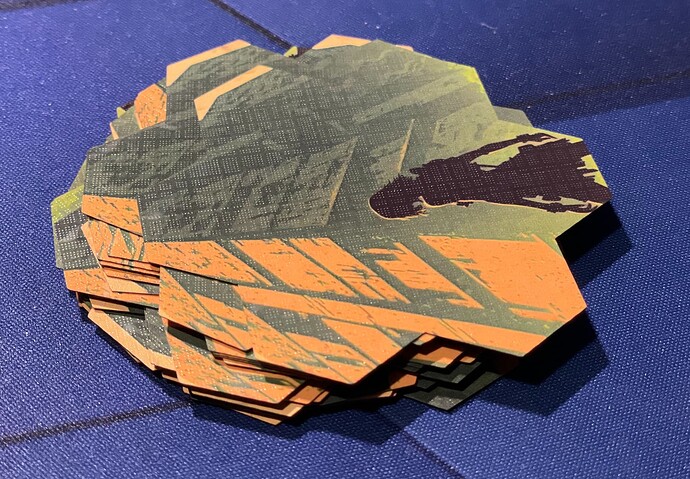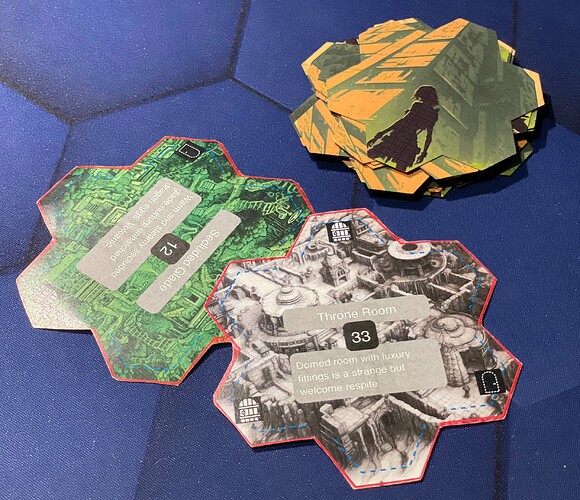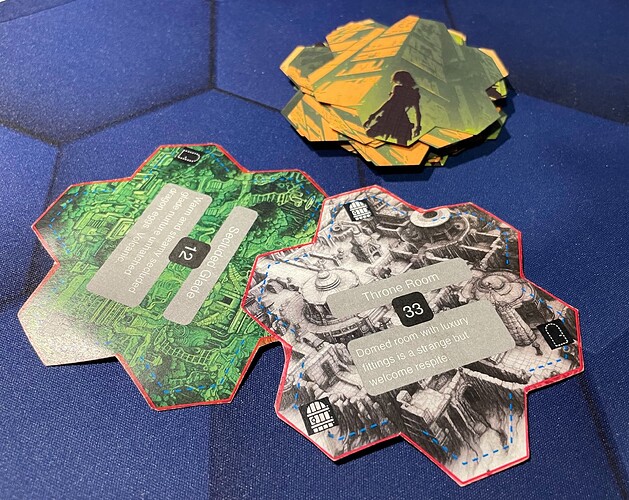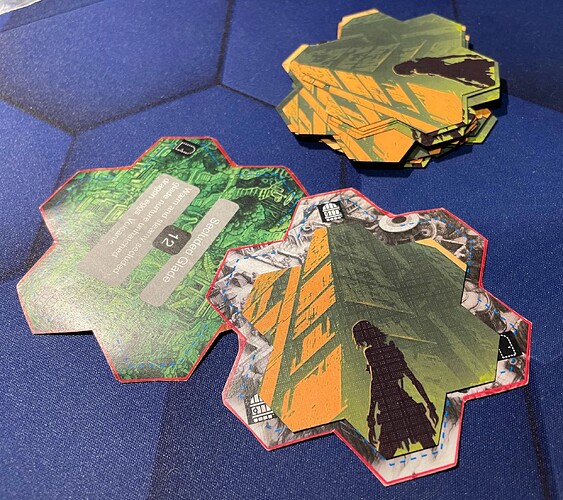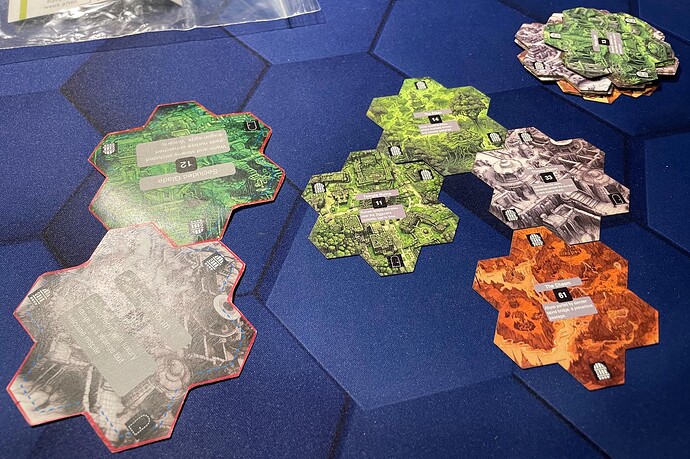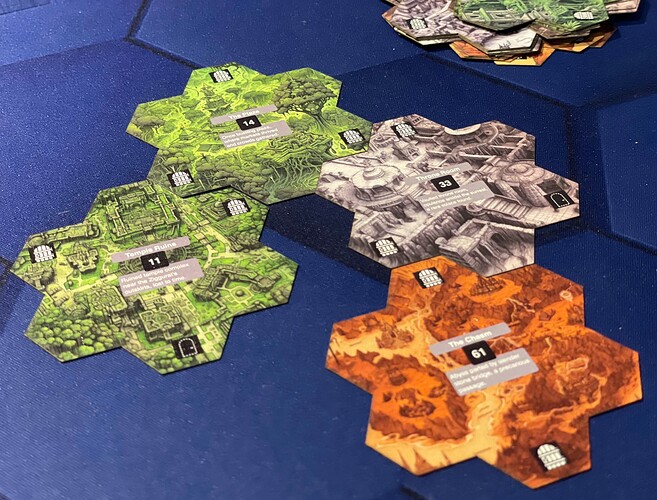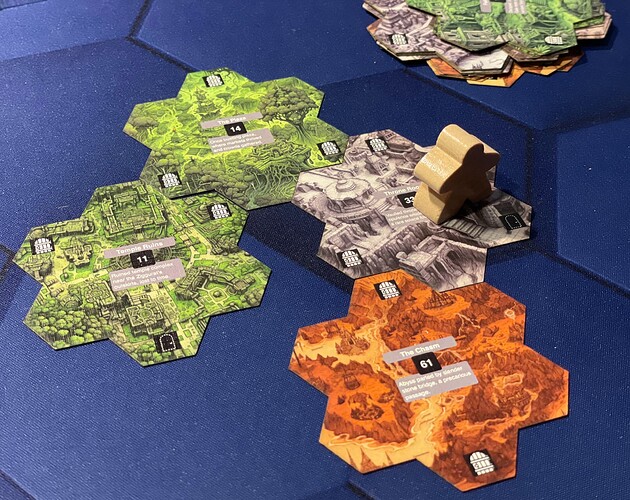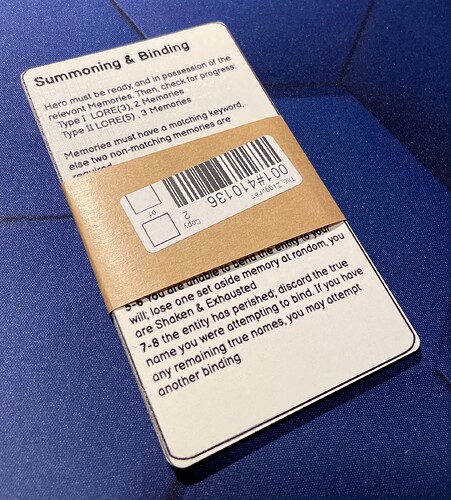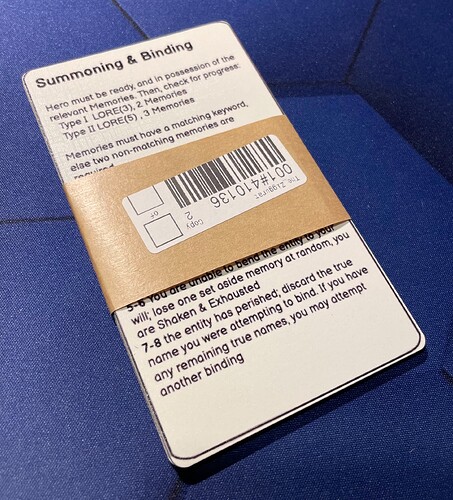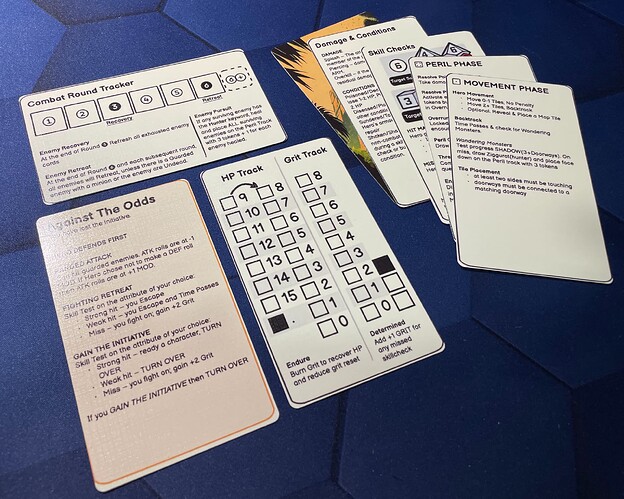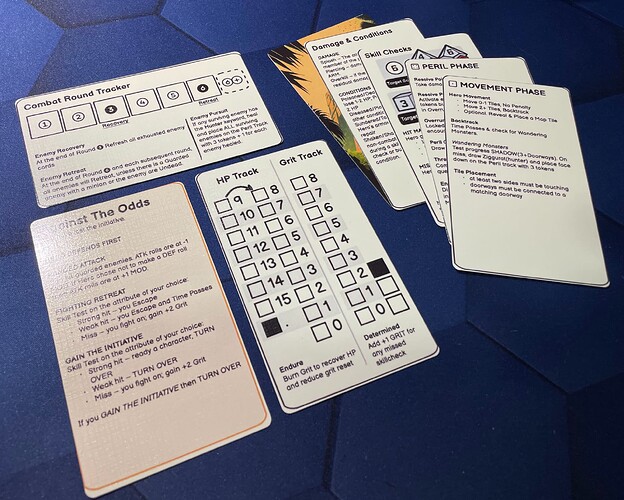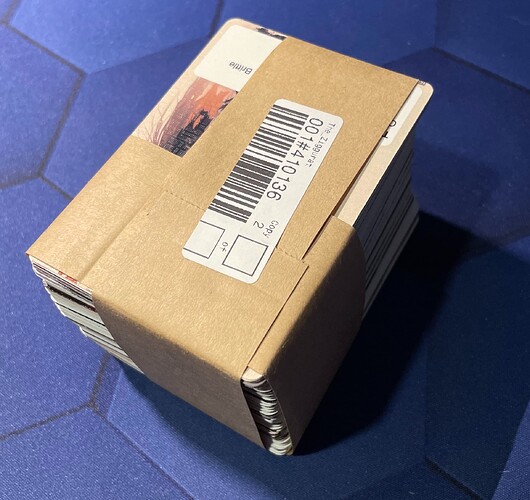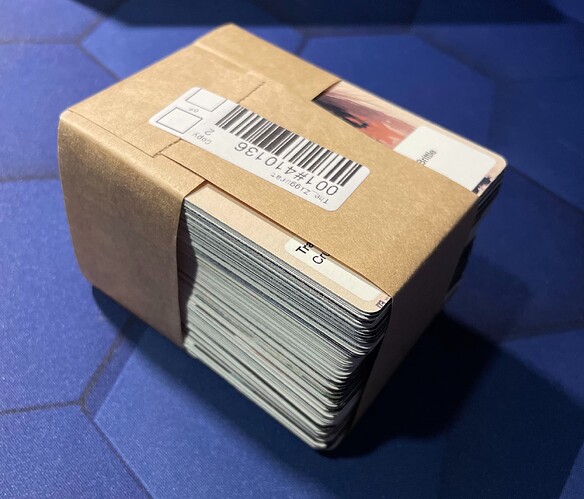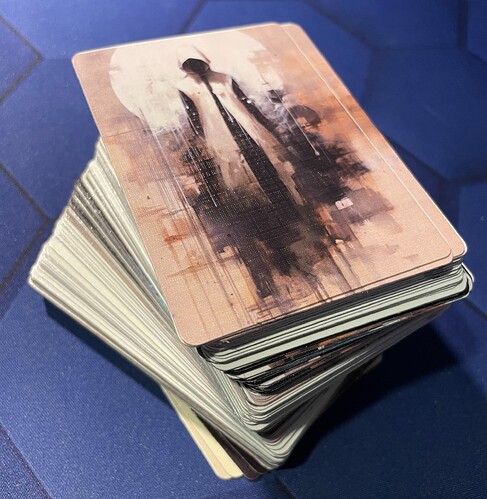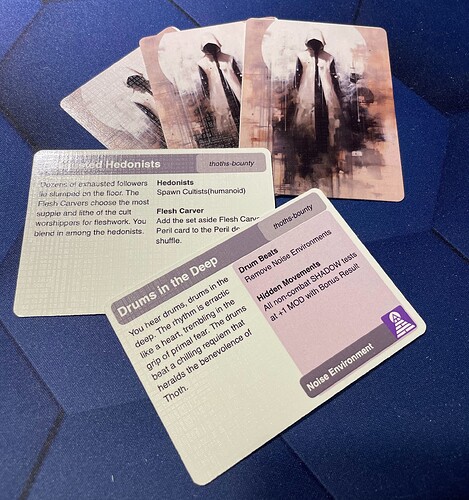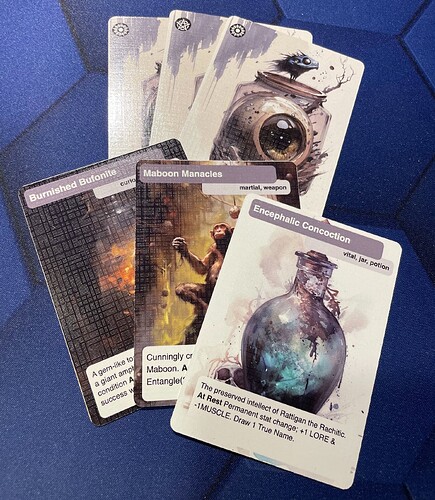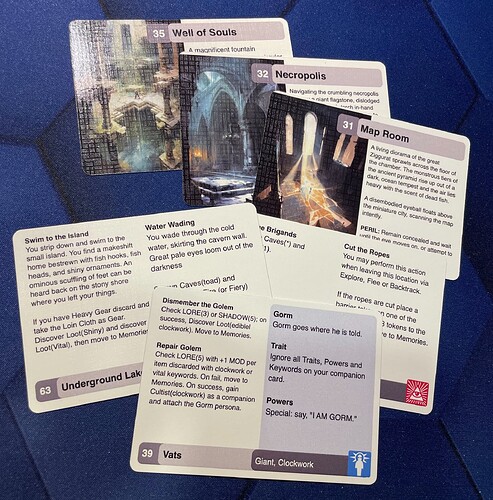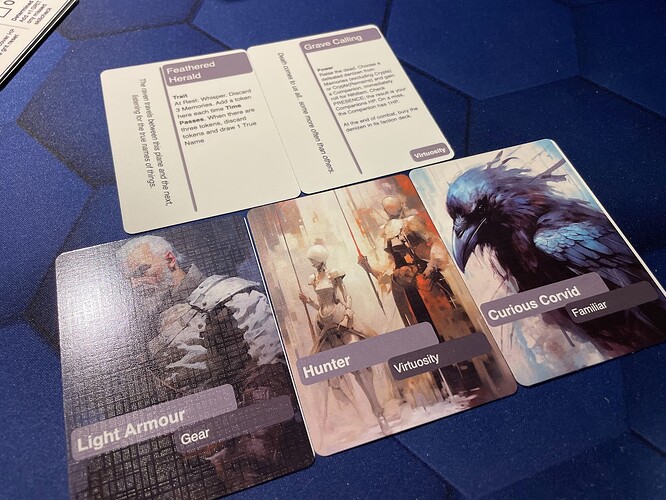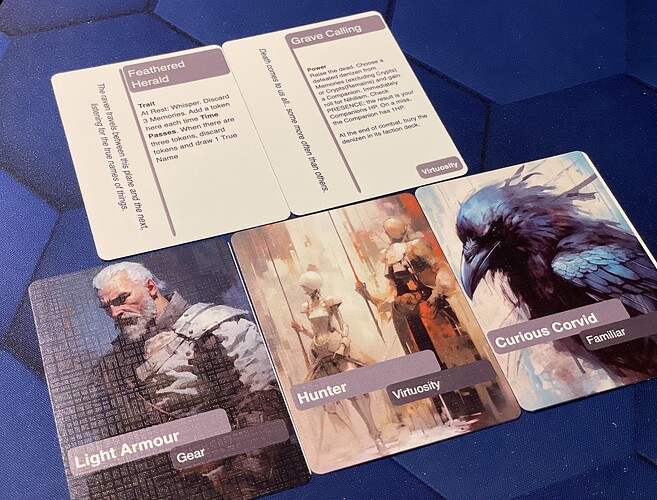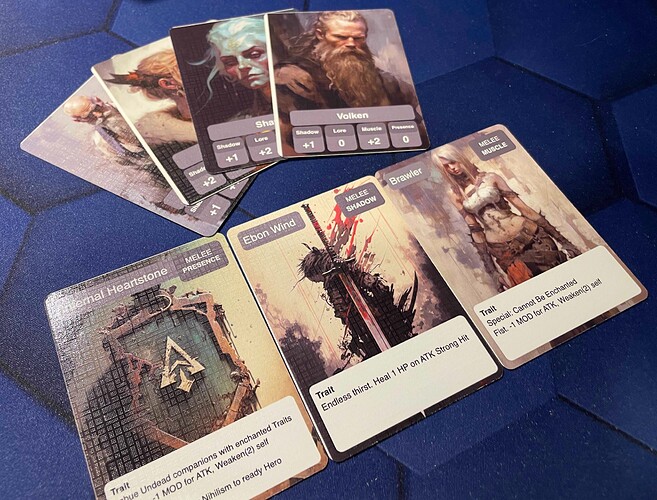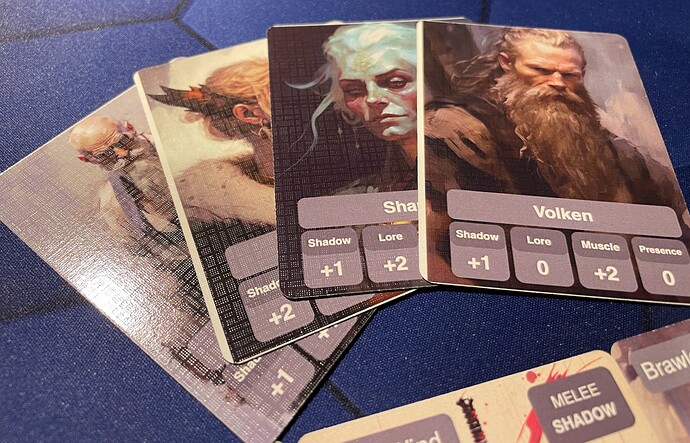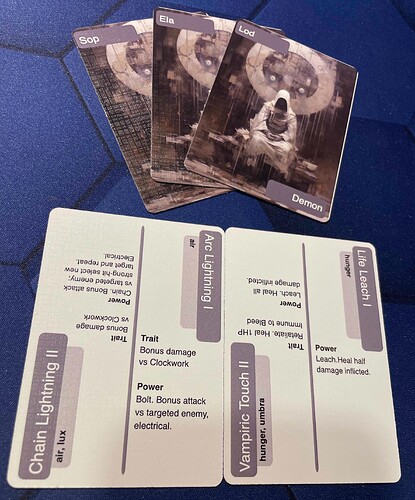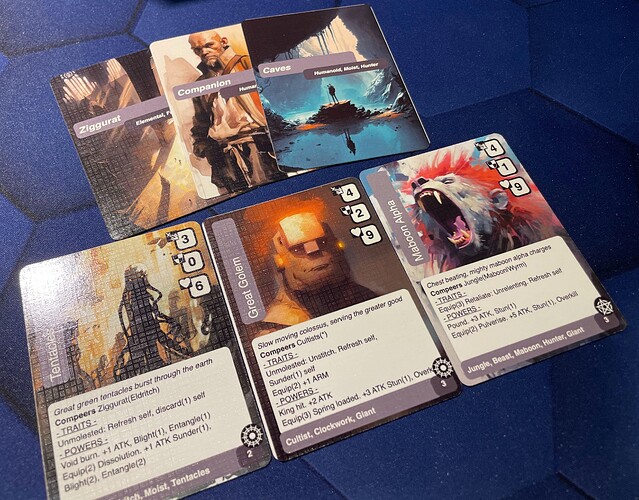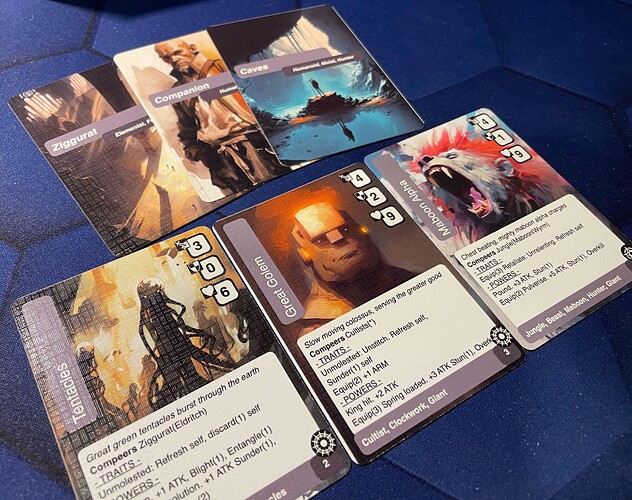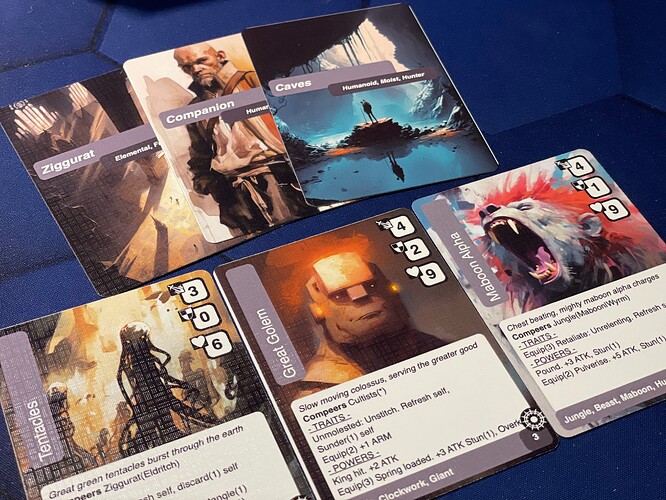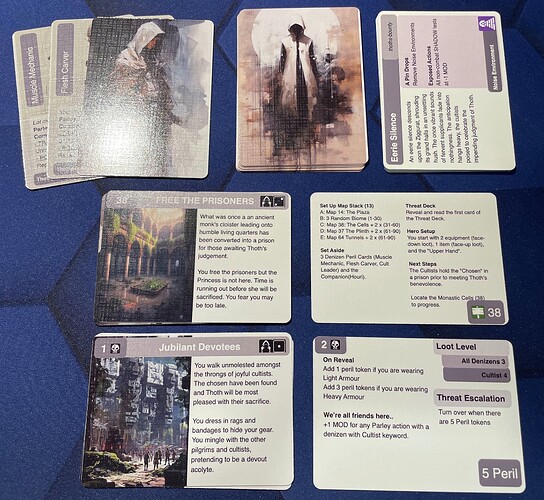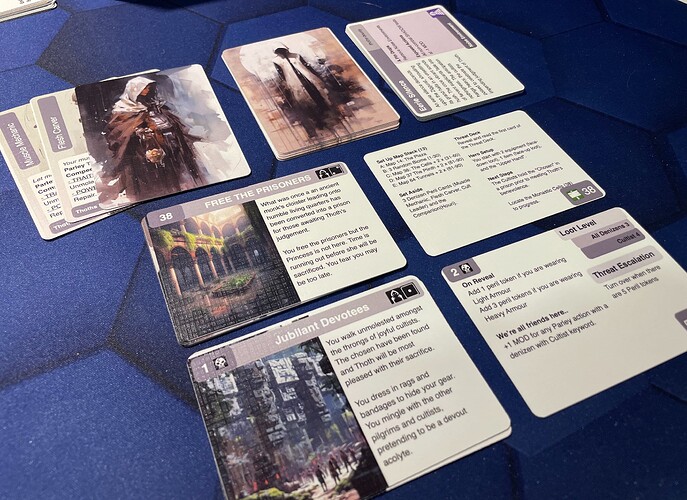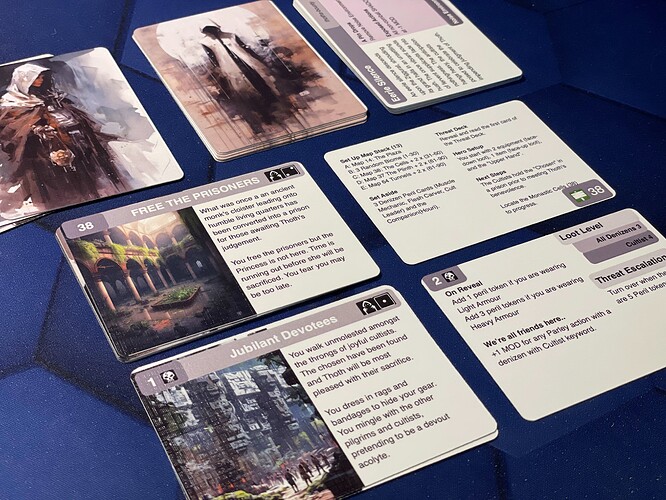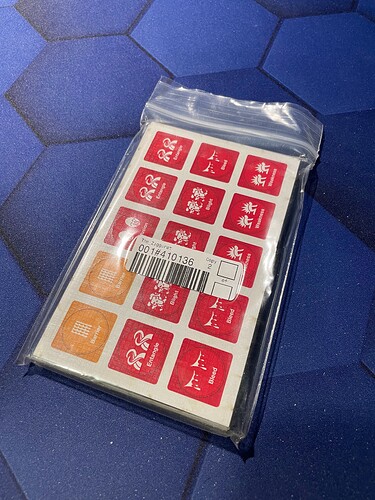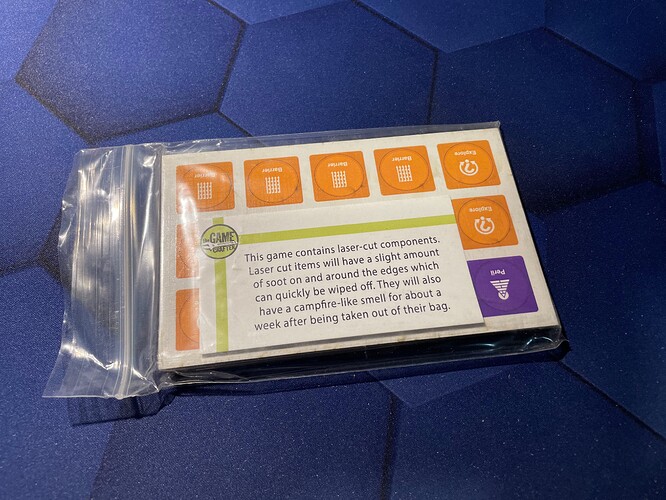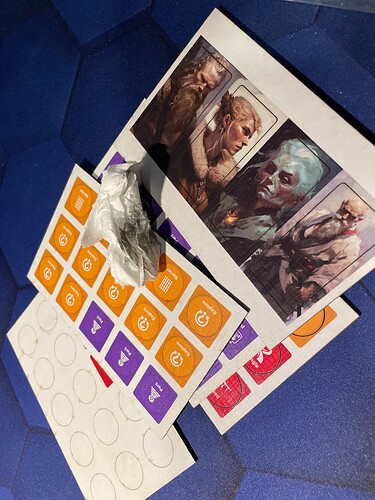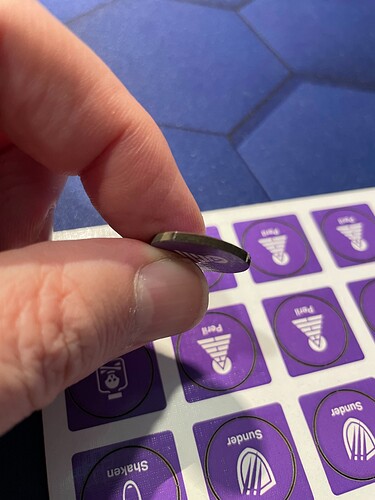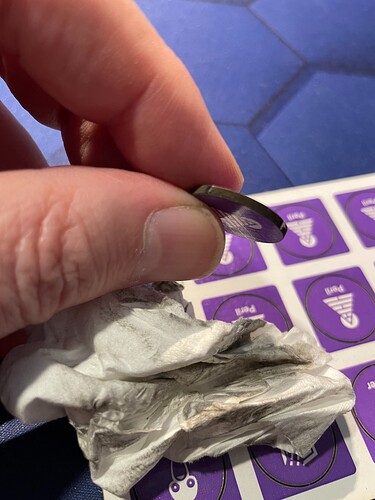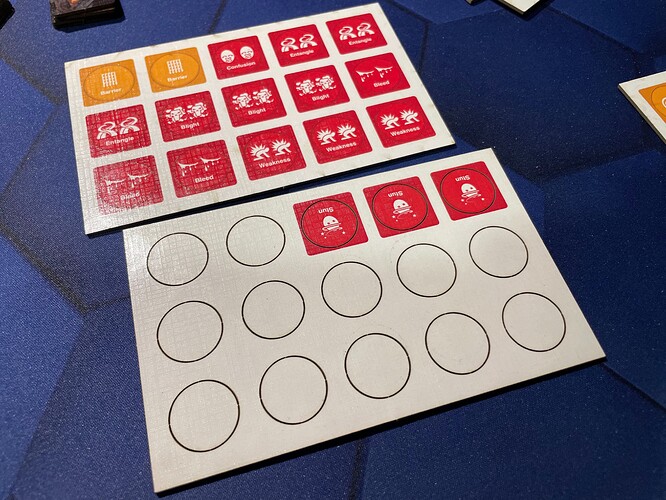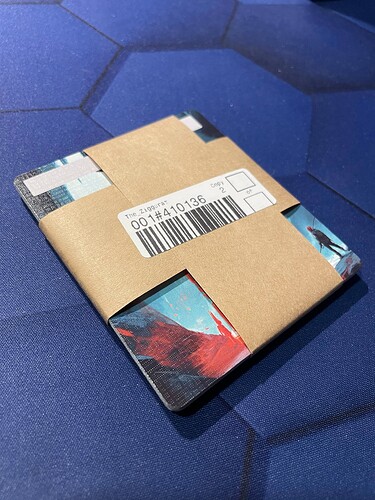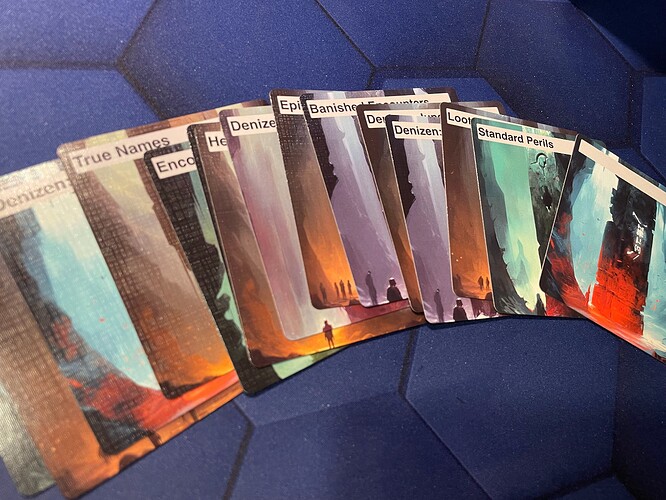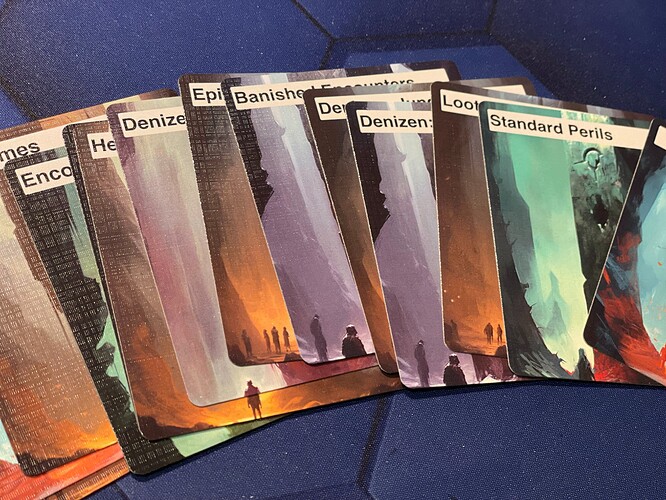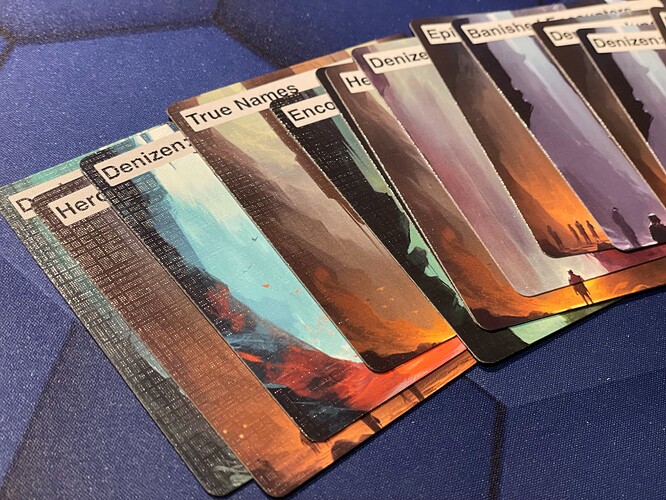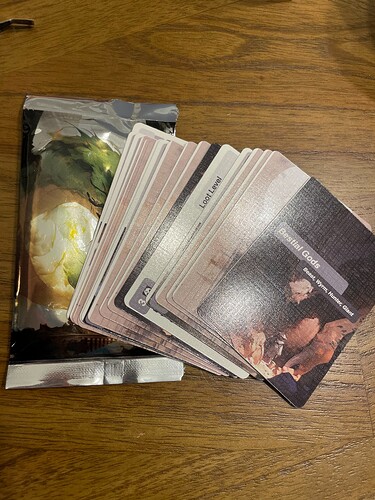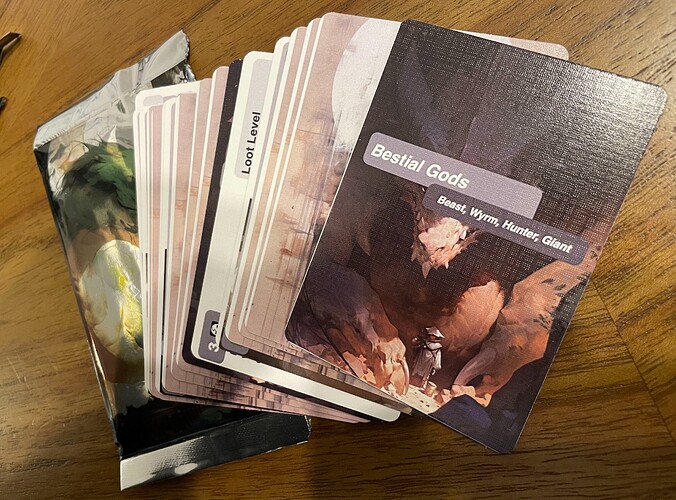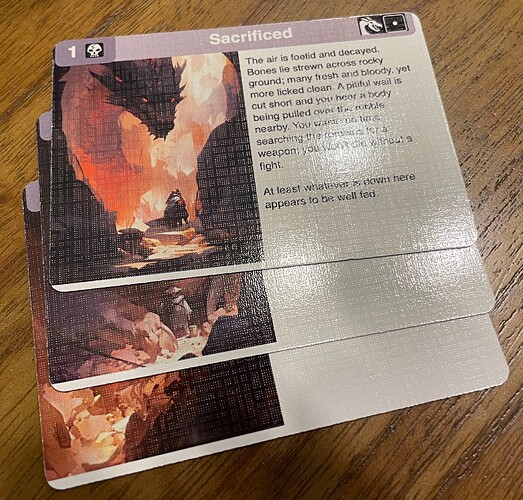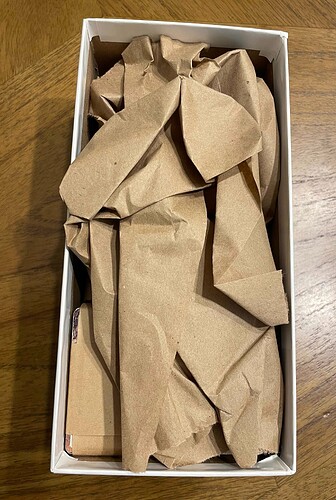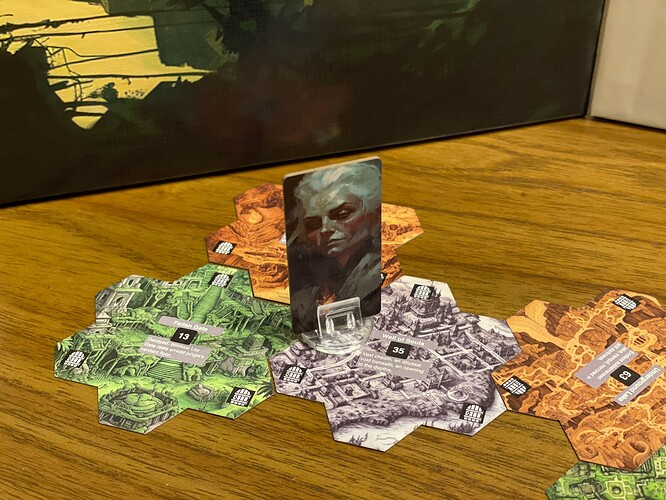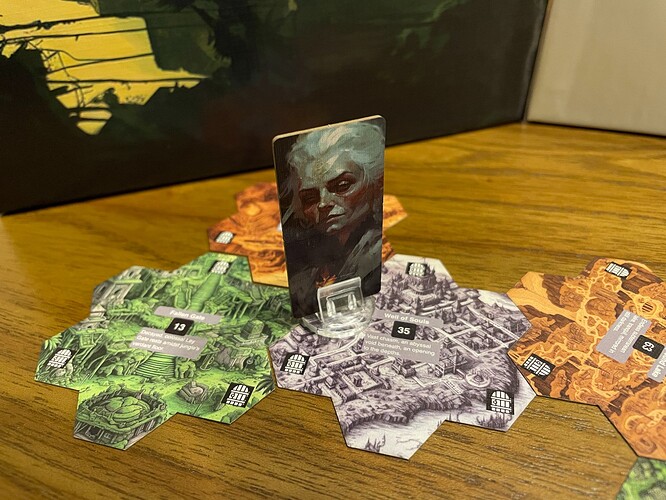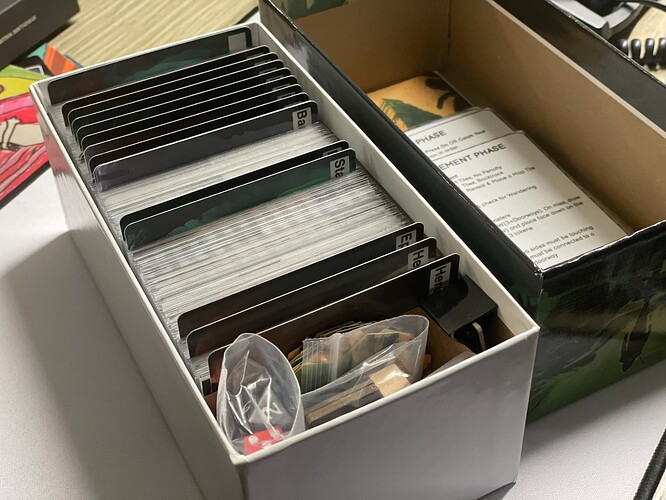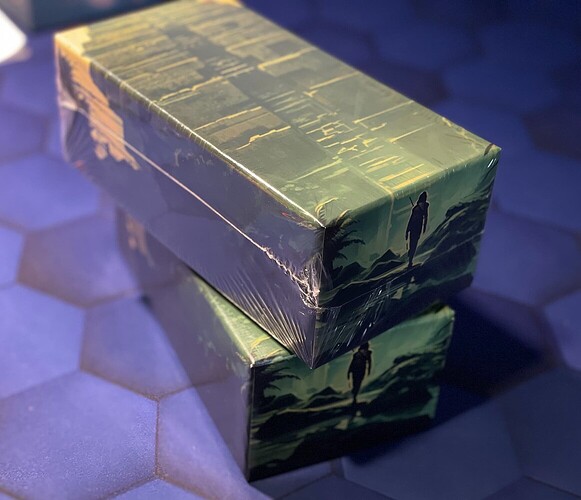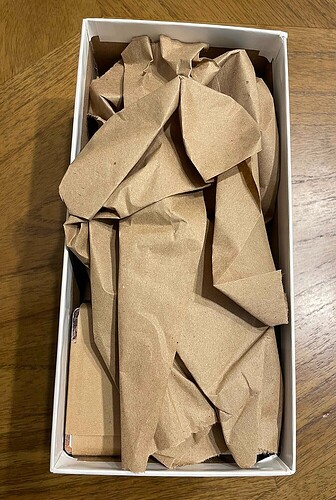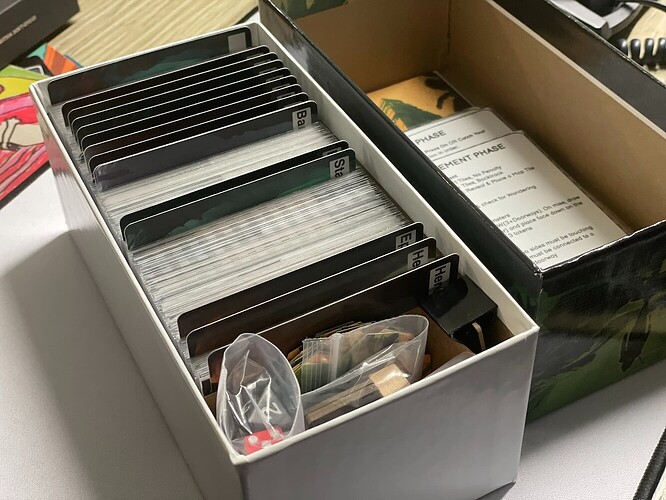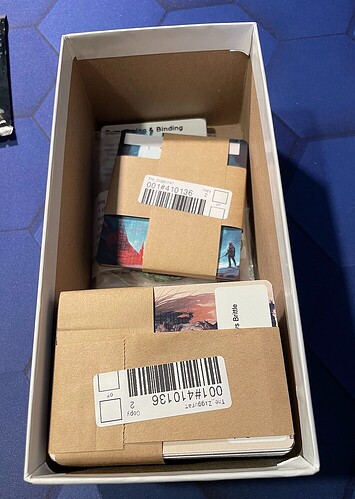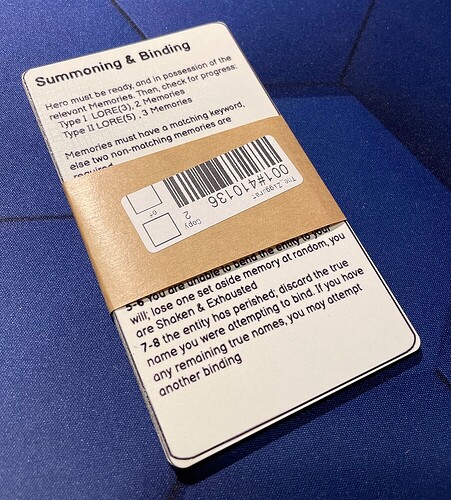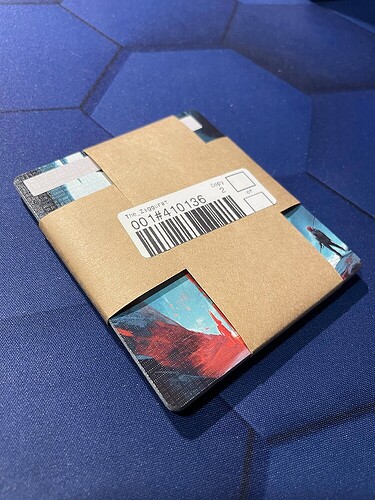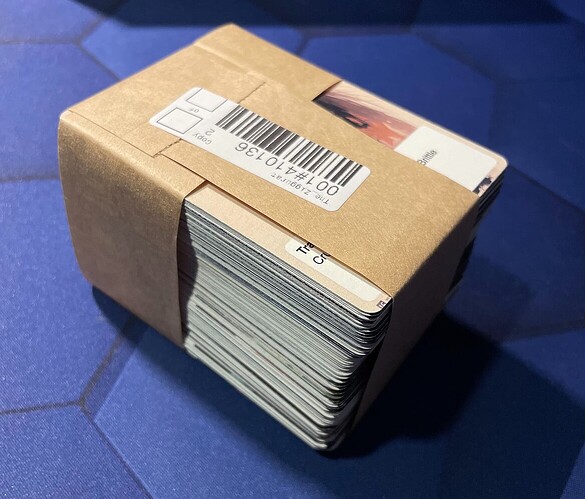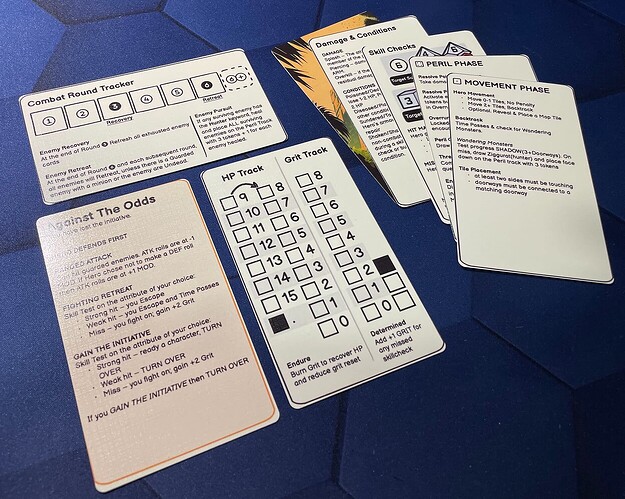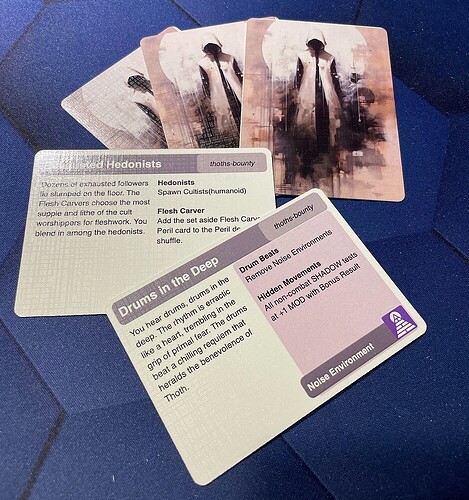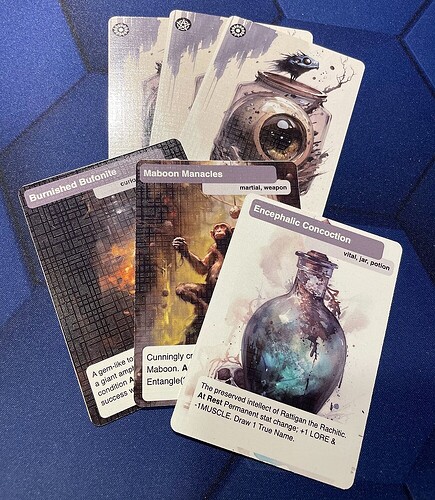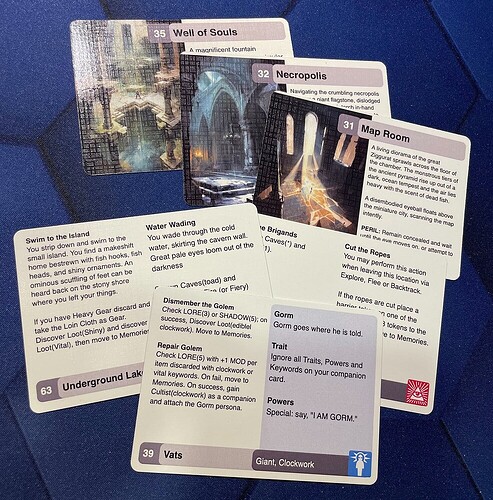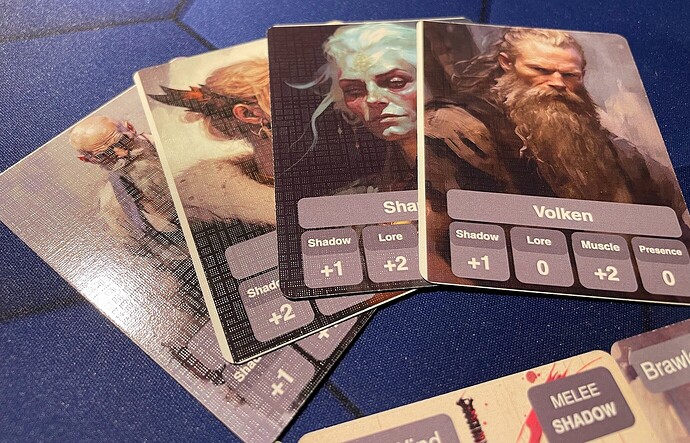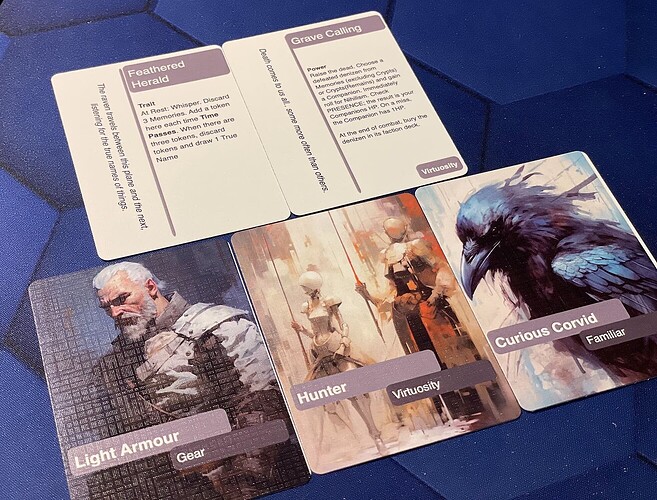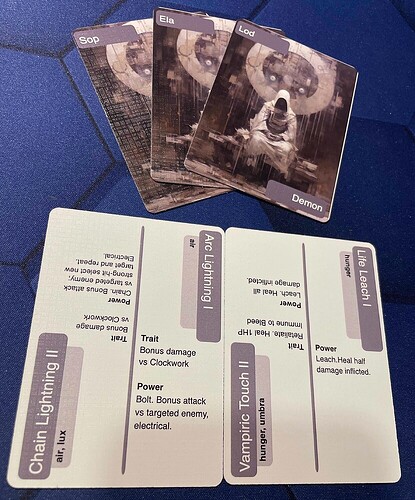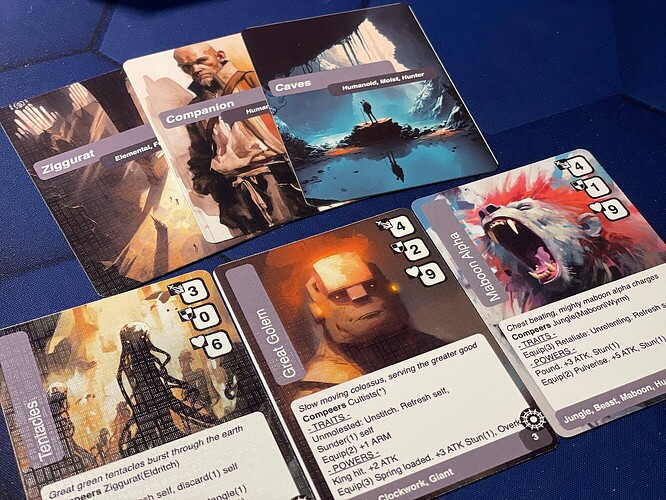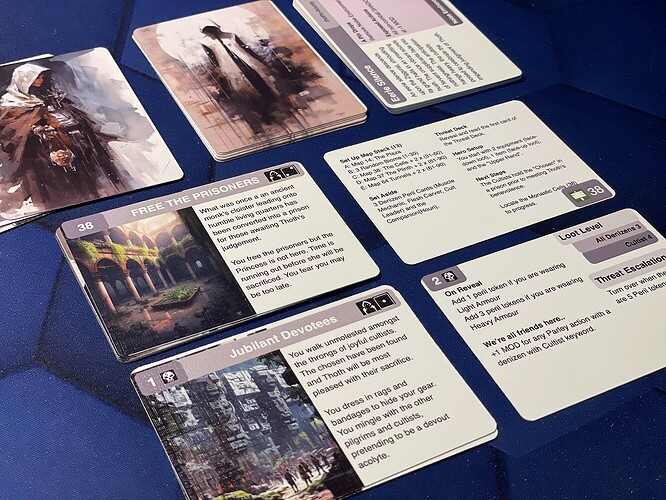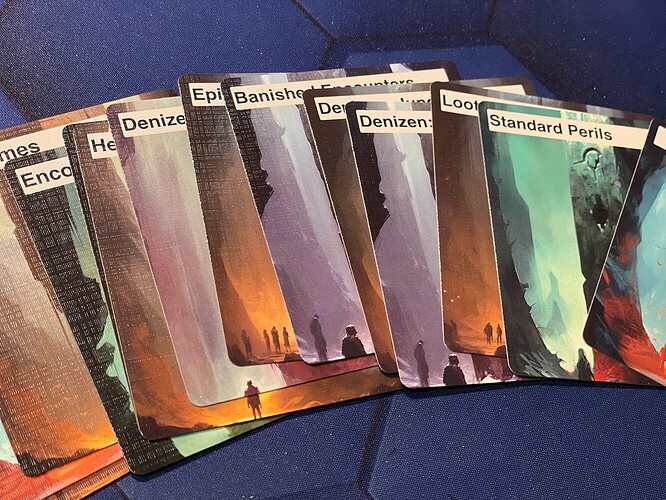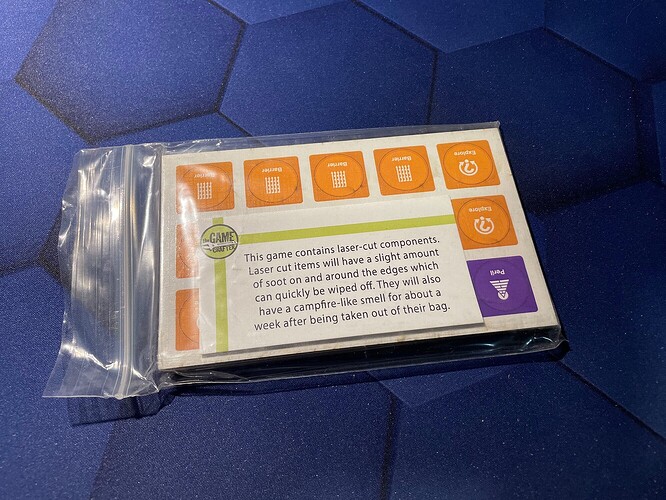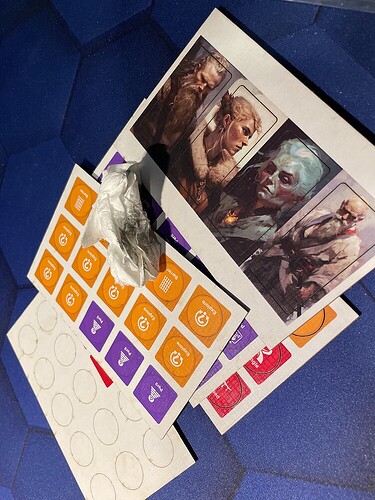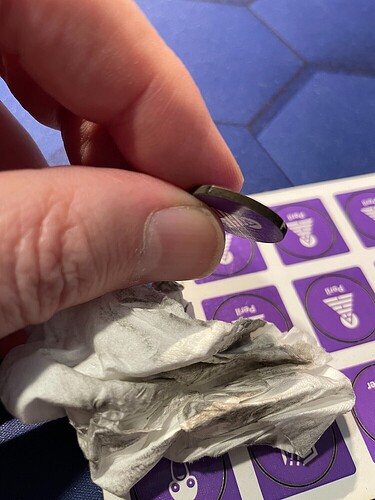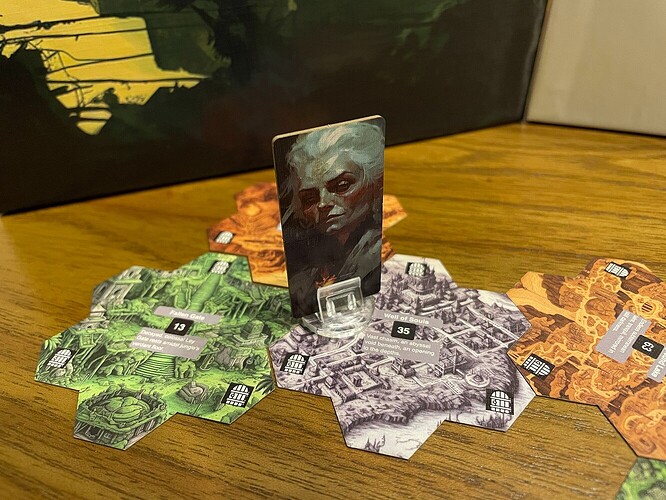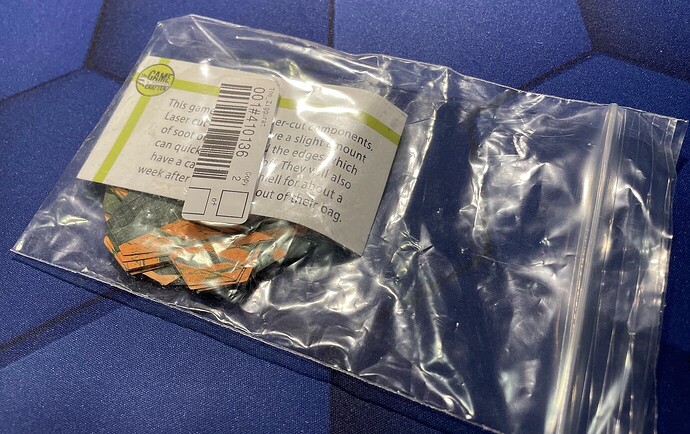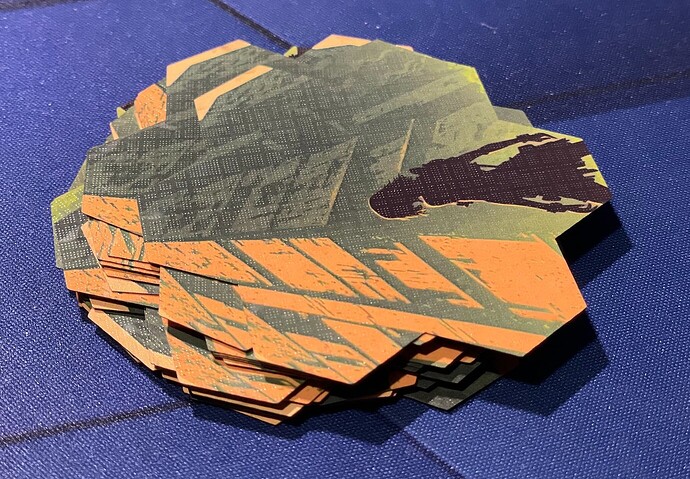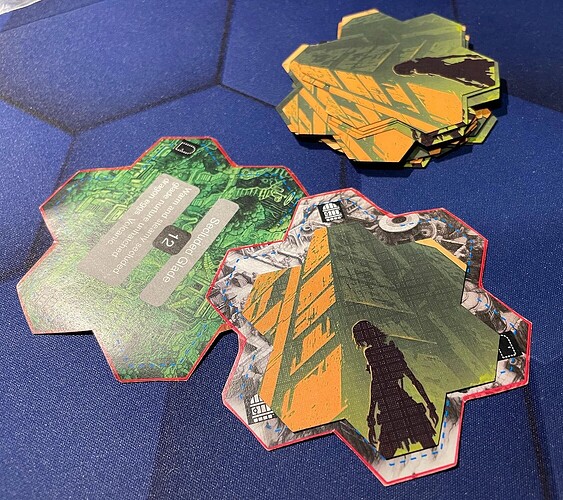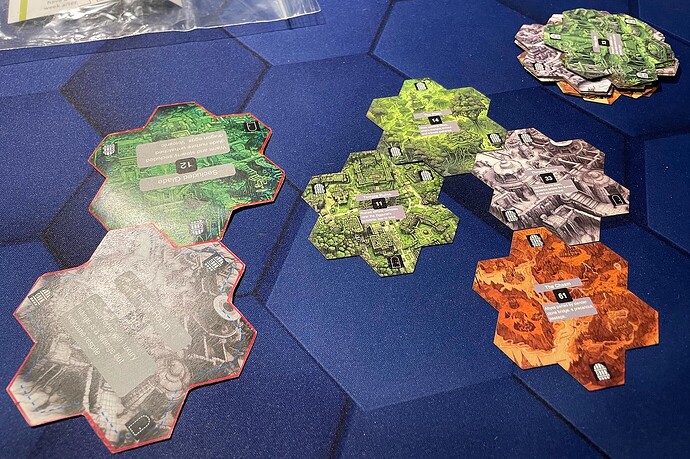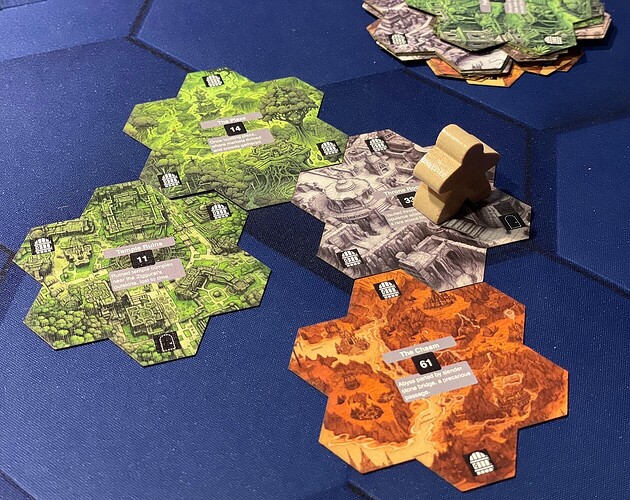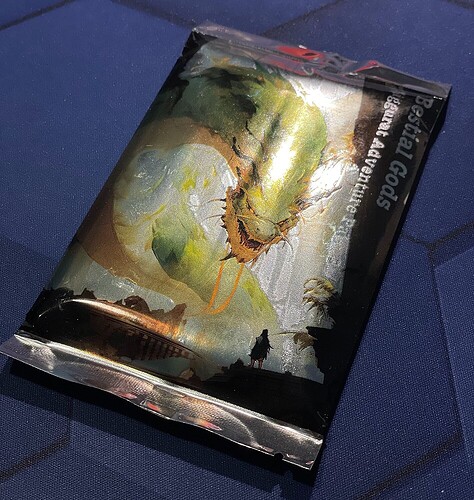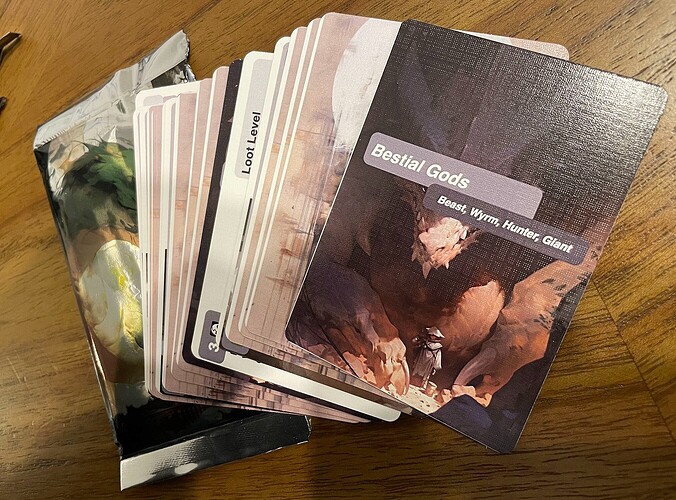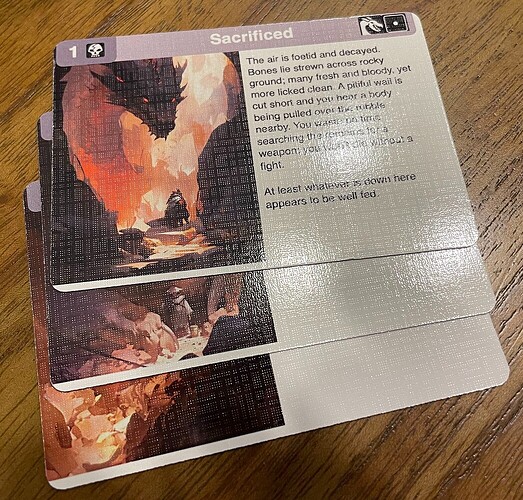First crack at a physical prototype printed and built through the Gamecrafter Platform.
Here’s the final deck box fully punched, cleaned of soot, sleeved and bagged. Also added a little makeshift card insert to isolate the non-card components.
Deckbox
Gamecrafter has a ranged of set box sizes. Ziggurat is primarily a card game and so the “Deckbox” seemed like the ideal box format. For the basic prototype I just wrapped a single image as the box top.
Overall, really like the box format. Its sturdy, hold a lot of poker cards landscape, and it’s just got a good vibe for cards.
The prototype excess space comes packed with paper to stop things shaking around. You can also see from this view how the corner wraps. It’s not perfect and lifts in the corners. You can smooth down the sticker that makes it look better – ok for me, but probably not ideal for potential customers.
When you get everything sleeved up and into the box it looks pretty good. Dividers seem essential to provide some kind of demarcation between card groups. I cut a small rectangle of card to create a little pocket at the end of the box to hold random components – doesn’t appear to be any Gamecrafter options for cardboard inserts for this box format which seems a bit silly as without some sort of divider the cards will fall flat in the box.
Card Packaging
All the cards of a specific size or format are concatenated and printed together. You get a single “packet” of all the cards of that size regardless of how they may have been loaded and split.
I have all the player aids in Tarot size, so they got bound together into a single little packet which works well.
The same was true for the dividers which are just another “card format”.
All the poker decks get mashed together into a large single packet, forcing your customer to manually divide everything up into the correct deck. There are some workarounds for getting decks individually packed, but then you start increasing your costs as you lose the benefits of having all the poker cards stacked into a single print run.
So that got me thinking a little bit harder about making it much clearer how card sets go together – especially all the little decks associated with quests; set aside cards with quest, threat and peril decks. Am working on a little system of icons and colour coding to make it much more obvious which cards belong to each epic quest.
Gamecrafter Card Quality
So this was more an exercise in getting a feel for how the printing and assembly process works, and the quality of the various components. I could have gone for a simple “white box” and blank components but the price doesn’t appear to be any different printed – so having the assets i thought i’d try and get something more realistic put together.
For all cards I selected a linen finish and UV coating – going for the best quality card option available.
The tarot cards sized player aids look a bit odd. They’re low res image assets I put together for prototyping but I was surprised how good they look printed up. Gets me all excited about what they might look like with a bit of professional graphic design.
There’s no difference in cost for having completely different front and back for every card; most of the Ziggurat cards have varying backs. I had thought they’d be some sort of saving for having a common back for card decks, but it doesn’t seem to be the case.
Here are a bunch of photos of different decks and how they turned out once separated from the main packet.
Standard Peril deck
Loot Cards
Location Encounters
Heroes
(You can see examples of the “drift” you can get in the print and cut of the cards – ie. the ugly white edge on some of the cards)
Hero Accoutrements – fancy word for gear, virtuosities and familiars
True Names – weapon enchantments
Denizens
Quests
General Thoughts
Overall the card quality is great. The linen and UV coated finish feels silky to the touch. The cards have a nice “snappy” quality about them. And the colours really “pop” – despite no effort to colour balance, or retreat the PNG exports uploaded to the print system.
A few negatives though:
- they’re not cheap
- the drift on many cards is significant
- the edge of the cards feels “sharp” almost as if you’ll get a paper cut if you’re not careful
Also I wonder about the fidelity of colour between different print runs – for example will the card colour be exactly the same on completely different print jobs or will there be an obvious difference. This is important if I end up offering supplements or expansions at a future date that just “drop in” to the existing decks. I have seen problems with other games and their expansions bought on Gamecrafter in the past – impossible to know if thats a creator issue or Gamecrafter printing issue.
I think much of the “drift” issue could be sorted if I can work out how to expand the background image for the card to be included in the bleed. At the moment the package i use (Multideck for MacOS) to manage cards generates a transparent bleed by default.
Divider Cards
A quick note on Dividers…
For large card decks, Dividers are essential for keeping things in order. You get 15 per sheet, and again no price difference for printing full colour front and back.
I took advantage of this and generated a set of super cool Monolith images for the cards. The Monolith is critical from a Ziggurat lore perspective although I never really articulate that specifically in the narratives. Thought it might be a subtle touch to add the emphasis in the components.
But completely screwed up the orientation
Gamecrafter Laser Cut Punch Outs
Gamecrafter offers laser cut tokens. You get a sheet with up to 10 slugs; the baggy has a stack of 5 slugs. So you pay for the sheet, then a per unit cutting price. ie. I could have got a lot more tokens from my sheet in this instance.
Each slug can have a different set of shapes. I only have examples here of medium round chits for the tokens and dominoes for hero standees.
Now that I know what I’m doing I’ll end up with a bunch more chits the next time I make an order. For example, in the next print run I will definitely get more tokens and split these by rounded squares and circles to better differentiate between chit types – such as hero conditions versus other tokens.
So while the final outcome is good the initial impression is less than ideal. As the warning label implies, there are a few problems out of the bag.
The chits are grubby. The “camp fire smell” was not significant for my batch – possibly because i opted for the UV coating which I believe reduces this issue. But the soot on the surface of the slugs makes them feel like you pulled them out of the camp fire.
You need a damp paper towel or equivalent to wipe everything down.
And while they punch out very crisply, you have to clean the edge of each token carefully. Again the final token quality is really quite good, but the grubbiness of the burned edges is unpleasant.
The domino chit works surprisingly well for a Hero standee (4 per slug) which is pretty cool seeing as I threw them in at the last minute.
Overall no issues with bleeds and drift, and the choices you have for standard chit sizes and shapes gives you plenty of options.
Gamecrafter Map Tiles
Something that didn’t work out great was the floral hex mats – the dungeon map tiles.
You are limited to 20 per sheet, and I had mistakenly assumed these were heavy-set tiles similar to the token/chit materials. It turns out to be the same paper stock as the playing cards, and the tile literally fits within the constraints of a single poker card.
That’s considerably smaller than the print and play tile formats I’d been prototyping with.
That said, they still look very pretty on the table.
I really want the map tiles to be a stand-out component. To that effect they should be the size and quality of Hexploreit tiles or maybe even Mageknight. In any event, they work perfectly well for prototyping.
Expansions and Booster Packs
One of the things I was keen to look at was how expansions or booster packs might work. The Ziggurat is the sort of framework that is ideal to “drop in” extra content in a way that just supplements the existing content.
Gamecrafter offers a specific “Booster Pack” packaging option that is a printable, sealed foil pocket that holds only 18 poker cards.
As it turns out, Ziggurat quests are about 16-18 cards in total so i thought I’d add a unique quest to the print run and see how it turned out.
How sweet is that? And when you rip it open…
Unfortunately, my little adventure pack had some drift issues on the card printing. But notably the colour of the cards appears to very closely match the main prototype.
At this point I’m not entirely sure I’d support the game with this type of mini-expansion as opposed to a more comprehensive expansion. But nevertheless very cool to get a little “Bestial Gods” booster pack to pull apart and the packaging format alone is a fun experience.
Am getting close to pushing another Gamecrafter build aimed at some proper blind-playtesting. A lot of improvements in my print files etc now that i have a much better handle on drift, bleeds, finishes etc.
Still not entirely convinced the convenience of TGC will out-win my desire for higher quality components – we’ll see.
Targeting end of August 2024… ![]()
